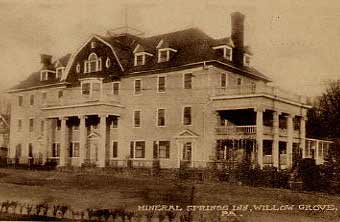
Committees
- Archaeology
- Archives & Displays
- Business & Industry
- Genealogy
- Historical Sites
- Meetings & Programs
- Natural History
- Newsletter & Publications
- Oral History
- Social History
- Special Activities
- Willow Grove Park
The Archaeology Committee
What is Archaeology?
Archaeology is used to investigate all periods of time; it looks at everything from the earliest humans to yesterday’s rubbish. At one time archaeologists were content to excavate objects so that they could be displayed in museums or private homes. Today it is not only the objects that are of interest, but the location or context in which they are found that can tell us a great deal.
Written history can only tell us about a fraction of our past; we need what archaeologists call the “material remains” of our ancestors if we want to get a clearer picture about life in the past. Material remains include such things as what is left of houses or other buildings, tools and objects, pottery, plant and animal remains, etc.
A question is often asked; “why do archaeologists excavate the remains from more recent periods, which have been recorded by historians, travelers and other interested parties?” The answer is that written history does not deal with everything that happened in the past; it is selective, it records specific events. Historical documents usually tell us very little about the everyday life of the ordinary person. Because of this, they give us a partial and unbalanced picture of life in the past. The purpose of archaeology is to supply the information that history leaves out.
Why We Dig Dump Sites
Garbage Archaeology is the most recent branch of archaeology and is done predominantly in the United States. It is important because it contains the evidence of everyday life in America. Garbage Archaeology uses archaeological techniques to study modern garbage in order to gain a more accurate picture of modern life. It can tell us about what people eat, how much they waste and what they do during a food shortage. It also provides information about the type and quantity of hazardous materials that people throw away and the different buying patterns of rich and poor households.
The Upper Moreland Historical Association has been involved in Dump Digs since its inception and have displayed throughout the township building the artifacts retrieved on those digs.
The Restoration of a 100-Year-Old Mineral Spring
The spring was once used by the Mineral Springs Hotel and was built during extensive renovations done to the hotel in 1895. It is located at the southern end of what has been referred to as the Hankin Tract; about 50 yards from the northwestern most part of the walking trail located in War Memorial Park.
The process of restoration began in November of 2002 when photos were taken and a preliminary plan devised. The plan was submitted to the Director of Parks and Recreation for Upper Moreland Township, to acquire the necessary permits to begin restoration and to the Police Chief so that if there were concerns from park patrons or neighboring residents, the police would be prepared to allay their concerns.
On April 6, 2003, the Archaeology Committee began removing the debris from inside the walls of the spring. The amount of concrete debris removed indicated that the fixed section of the lid, or concrete section, extended approximately three-quarters of the total area of the spring opening with the wooden section covering the remaining one-quarter. A trash pump was used to remove the water and silt from the spring so that the remaining debris from the spring could be removed with ease.
The spring was originally constructed of concrete and fieldstone rising about two feet from the surface of the ground and extending below the surface about two to three feet. The overall size of the spring is 95 inches running east to west and 68 inches north to south. The water enters from the southwest side of the spring approximately 6 to 8 inches west of the center of the south wall. There is a stone and cement hood over the entry point to keep the water from jetting up and stirring up the silt on the bottom of the spring. The spring also employs a layer of rocks on the floor of the spring used to allow the water to rise gradually, also to not stir up silt. The water also enters by the same method on the west wall about 6 to 8 inches from the southwest corner of the spring. Since the level of the water in the spring is about 9 inches, the water exits the spring through a pipe in the stonework and winds its way to the stream located on the western part of the Park.
The goal of the Archaeology Committee is to incorporate the spring site into the Parks and Recreation Department’s Master Plan for War Memorial Park. The goal includes the installation of walking trails through the Hankin Tract and the spring site. Other possible features contemplated by the Archaeological Committee include a park bench, a new lid for the spring, a bridge on the south side, and a Historical Site Marker.
The concrete section of the lid was formed in three sections using a formula found in an 1873 edition of the Public Spirit. This formula was modified slightly to add a coloring powder to the cement mix for a more aged look and to give the concrete the appearance of old wooden boards. The wooden section of the lid was made from one of the best outdoor woods available; mahogany. The wood was treated with a marine-grade spar-urethane; one of the most durable coatings available.
Since the spring was crudely constructed in 1895, the walls were out of level and out of square (approximately 5” over a 34” span). To completely level and square the spring would take away from the original historic look to the spring, but leaving it as it was would allow gaps between the lid and the spring. The decision was made to use field stones found in the immediate area to fill the gaps, leaving a rustic appearance. The end result of this work is a fully restored spring that looks similar to what it looked like originally.
The Montgomery County Health Department was contacted requesting a chemical analysis of the water to find out the mineral content. The MCHD stated that they were disappointed in the results and that the mineral content was not much different than other water sources in the area.

